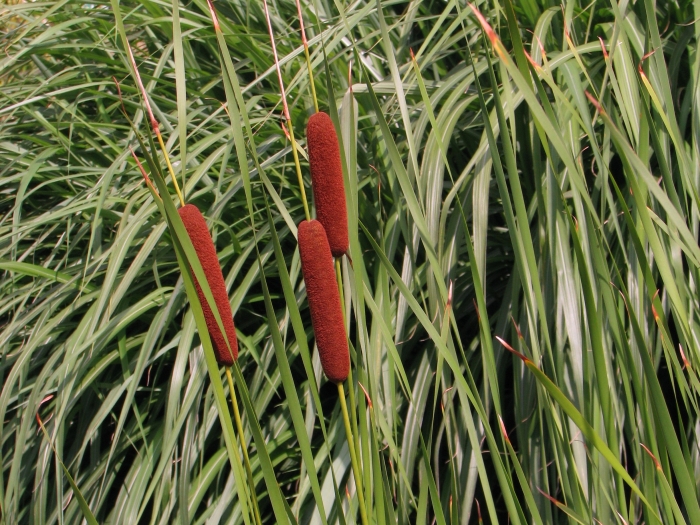Narrowleaf Cattail
(Typha angustifolia)
Narrowleaf Cattail (Typha angustifolia)
/
/

Agnieszka Kwiecień, Nova
CC BY-SA 4.0











































































Estimated Native Range
Summary
Narrowleaf Cattail is valued for its ability to stabilize soil and provide habitat for wildlife. It is often used in constructed wetlands for wastewater treatment and in riparian plantings to prevent erosion. In ornamental water gardens, it adds vertical structure and texture. This plant requires abundant water and can grow in full sun to part shade. It is adaptable to a range of soil drainage conditions, from fast to slow. However, caution is advised as it can be potentially invasive outside its native range, and its aggressive growth can dominate aquatic ecosystems, displacing native vegetation.CC BY-SA 4.0
Plant Description
- Plant Type: Herb
- Height: 3-7 feet
- Width: 3-5 feet
- Growth Rate: Rapid
- Flower Color: N/A
- Flowering Season: Summer, Spring
- Leaf Retention: Deciduous
Growth Requirements
- Sun: Full Sun, Part Shade
- Water: High
- Drainage: Fast, Medium, Slow
Common Uses
Bird Garden, Erosion Control, Low Maintenance, Potted Plant, Salt Tolerant, Water Garden
Natural Habitat
Wetlands, including marshes, pond margins, and riverbanks in the Temperate Northern Hemisphere
Other Names
Common Names: Lesser Bulrush , Narrow-Leaf Cat-Tail , Narrow-Leaf Cattail , Nailrod , Nail-Rod , Cattail , Lesser Reed-Mace , Lesser-Bulrush , Small Reed-Mace , Smalbladet Dunhammer
Scientific Names: Typha angustifolia , Typha gracilis , Typha glauca , Typha angustifolia var. elatior , Typha foveolata , Typha angustifolia var. calumetensis , Massula angustifolia , Typha angustifolia f. foveolata , Typha angustifolia f. submersa , Typha angustifolia subsp. calumetensis
GBIF Accepted Name: Typha angustifolia L.